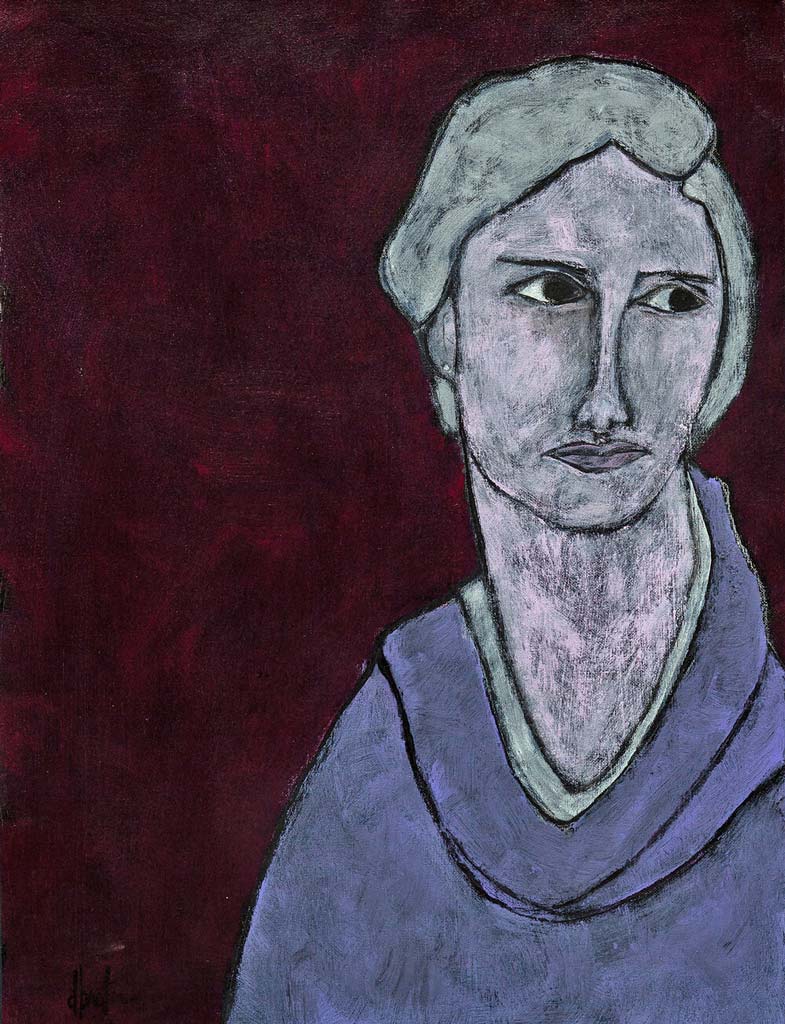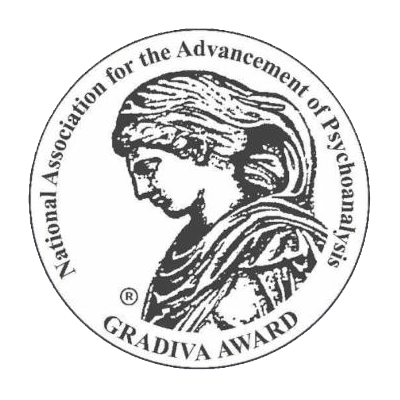
JUST SAYIN'
by Hattie Myers | Art: Dana Brotman, Margaux.
She often felt herself – struggling against terrific odds to maintain
her courage; to say: “But this is what I see; this is what I see,”
and so to clasp some miserable remnant of her vision to her breast,
which a thousand forces did their best to pluck from her.
— Virginia Woolf, To the Lighthouse
“Radical openness does not mean that we empty our minds but that we open our minds to the prospect of losing the understandings to which we are attached.” So begins An Interview with Anton Hart. To be fair, though, perhaps “loosening attachments” when face to face with the trifecta of fascist racism, COVID, and environmental extinction may be near impossible. It’s a big ask if, in the midst of existential terror, we are holding on for dear life. The practice of radical openness is marbled with loss. It is an often lonely, sometimes violent, always singular stance. It exists between impossibilities. Two threads run through ROOM 2.21: the awareness of what it means to live between impossibilities, and how it feels to live with the violence of being cancelled or rendered nonexistent. Some authors dismantle our perception of time and space; others write of what belonging, or not belonging, has meant to them.
In Traversing the Liminal: Reflections from Sag Harbor, Adrienne Harris recaptures the “rupture of ‘ongoingness’ and the disturbing present of gaps, absences, dissolved spaces.” Her reverie crisscrosses through portals opening onto new thresholds of departure. The intimacy Harris establishes with us becomes the answer to her not-so-simple question: “Do history and longstanding connections really hold across shifts in the frame; does the one-on-one contact allow for more links and safety?” Kyrie Mason historically reconfigures the past’s “unreal” relationship to the present. In Things Which Don’t Exist, he tells us, “Admitting to my ghostly blood is to acknowledge the feeling of being fleeting, as if I could simply choose to not exist in a future built on a past which hadn’t wanted me to begin with. All this despite the reality of my present, of the frustrations and restrictions and fears I live through daily as a Black American.” In My Eyes Are Brown, a dreamscape memoir replete with love and clashing traumas, Tarek Yaqub finds a way to lyrically make a past he never knew his own. Yaqub, a first-generation Palestinian-American psychiatrist writes, “I had etched the family trees of my mother and father into my memory as if I had watered them myself… What a tragedy it is to be exiled from a place you never wanted to leave but never knew.”
David Stromberg and Tuba Tokgoz tell a different story of exile. In a Search for Belonging, Stromberg describes the psychic toll of being an immigrant Israeli kid suddenly thrust into the belly of east Los Angeles. “I realize my many fantasies were part of an elaborate defense system erected to cope with the constant changes and bombardments of new realities I had to process and in which I had to function in real time.” In Between Two Homes, Tokgoz describes the “fantastical side of the journey (she’s) been on.” She writes, “Temporary visas are called ‘nonimmigrant visas’ which could be why I have difficulty naming myself an ‘immigrant,’ with its connotations of someone who has made a definite decision about where to live. I prefer the word expat, someone who lives abroad and reflects the in-between state of mind that holding a visa entails.”
There is nothing “fantastical” in Raynell Sangster’s excruciating description of “the many truths Black girls and women live” in her essay Whose Hair Is It. “The straightening comb was either seen as a rite of passage or the beginning of a painful relationship with oneself. To straighten one’s hair involves using grease and extreme high heat to force the texture of the hair to be pulled straight and to resolve all kink. The sound alone of heated grease reminds me of bacon sizzling on a stove.” Sangster asks, “How can Black girls maintain the ability to think about their true self in the face of whiteness?” Paula Coomer is wondering that about white girls too. Coming from a racially mixed and impoverished childhood in Appalachia, Coomer wants us to know that “not all of us are ignorant and drug addled, nor are we whites who manage to escape the ‘terrors’ of the ‘hollers’ for the hallowed halls of white aristocracy.” Her essay, None of the Above, is not about living in between (or outside of) two worlds; it is about being both and neither. She wrote, “I regretted it. I knew I was going to be taking up space that needs to be filled with the voices of Americans of color.” Like Sangster, Coomer takes her “unruly hair” as a starting point. But, as a white woman writing about her experience, she is well aware that she is stepping into a firing line.
“Wilford Bion said that when two people meet, an emotional storm is created.” In his essay Cytokine Storm, Bartosz Puk wonders: what happens when two people can’t meet in person? A cytokine storm is a hyperactive response of the immune system which is now associated with deaths from COVID. In the context of “radical openness,” we might ask what happens when psychic illness triggers an emotional immunity to others and overwhelms our capacity to connect at all. “Witnessing from a distance is not easy,” Puk writes. “It’s as though one is locked in a spaceship and can do nothing.”
In their essays, Christie Platt and Pamela Nathan describe the impact that witnessing up close had on them. In Motorcycle Man: My First Maga Patient, Platt looks back over a distance of thirty years to one of her first experiences as a young clinician amazed that “this stranger and I would find each other.” She remembers communications “filled with feelings and thoughts so delicate that I felt like I dared not breathe on them, lest he fly away in shame for revealing them.” But she also recounts moments of terror when “whatever road we were now traversing felt dark and ominous.” In Whispering Winds: Stories of Pain and Recognition, Nathan also looks back thirty years to her work as a sociologist at the Central Australian Aboriginal Congress when “it was rare to hear the Aboriginal voice—the aboriginal languages… Historical truth was buried in the Department of Aboriginal Affairs files, and the emotional truth was buried on country with the ancestors; massacred, institutionalized, chained, and criminalized.” Now Nathan is a psychoanalyst who works in the heart of the Australian prison system. She too bears witness up close to how “trauma underlies violence” and “nonrecognition and the invisibility of a person and a people causes psychic and communal death.”
“Recent events have given us all a ‘forced awareness’ of our frailty,” writes Luca Caldironi in Quarantine in Venice. “Perhaps we are forced to examine our relationship with time as it relates to the end of life, and more generally to confront our own fears and suffering.” Like Puk, Caldironi calls upon Wilford Bion to strengthen our resolve to enter a space—a labyrinth—of not knowing. What we do need, Caldironi concludes, “is for a few of the experts to be honest and admit to common feelings of fear and uncertainty about what is going on.”
Mental health professionals are experts in “not knowing.” We know how to follow our patients to places no one has been. We know how to keep our minds radically open to the prospect of losing our own convictions. But this is important: if we lose sight of the expertise that makes it possible for us to, quoting Platt again, “enter dark and sometimes perilous places,” then we are really lost. Returning to Virginia Woolf at the top of this editorial, each author in ROOM 2.21 is saying, “But this is what I see. This is what I see.” And yes, Virginia, there are a thousand forces —intrapsychic, interpersonal, cultural, and political— at work to stop them.
It is in this context that Bandy Lee’s essay deserves special recognition. Exactly two years ago, in ROOM 2.19, Bandy Lee described the death threats, the loss of work, and the public shaming she experienced after the book she edited, The Dangerous Case of Donald Trump, was published. Lee returns now to tell us in Gagged by Goldwater: Speaking up about Trump, Part 2 how the American Psychiatric Association—and the mainstream media in turn—shut out the expert opinion of mental health professionals, and in doing so, she lays out the dire consequences their censorious actions have had. ROOM’s editorial group believes this essay is one of the most important essays we have had the privilege to publish in the last four years. It is not about the pathology and danger of Donald Trump. It is about the pathology and danger of mental health organizations or professionals when they are unable to, in the spirit of radical openness, risk losing attachments to their own theories or, worse, to political and economic power.
ROOM 6.21 is now open for submissions. Please join us. We want to see what you see. ■
-
Hattie Myers PhD, Editor in Chief: is a member of IPA, ApsA, and a Training and Supervising Analyst at IPTAR.
-
Email: hatbmyers@gmail.com
-
Dana Brotman is a painter in Falls Church, VA, whose work is shown regularly at Touchstone Gallery in Washington, DC. Her most recent solo show, Transitional Spaces, was a series of paintings that explored the liminal space between what is here and what is gone, what is remembered and what is only dreamed, what is real and what is imagined, what is desired and simply, and at times regrettably, what one does and does not have. The show, scheduled to open on March 13, 2020, was already hung when the gallery space was shut down due to COVID restrictions (the show was moved online). Other shows include her 2017 solo show beg borrow + steal: works on cardboard, the 2016 group show Figure 8+1, the 2014 group show Form Transformed: Five Sculptors. In addition to her work as a painter and photographer, she practices clinical psychology in Falls Church, VA.
ROOM is entirely dependent upon reader support. Please consider helping ROOM today with a tax-deductible donation. Any amount is deeply appreciated. |




